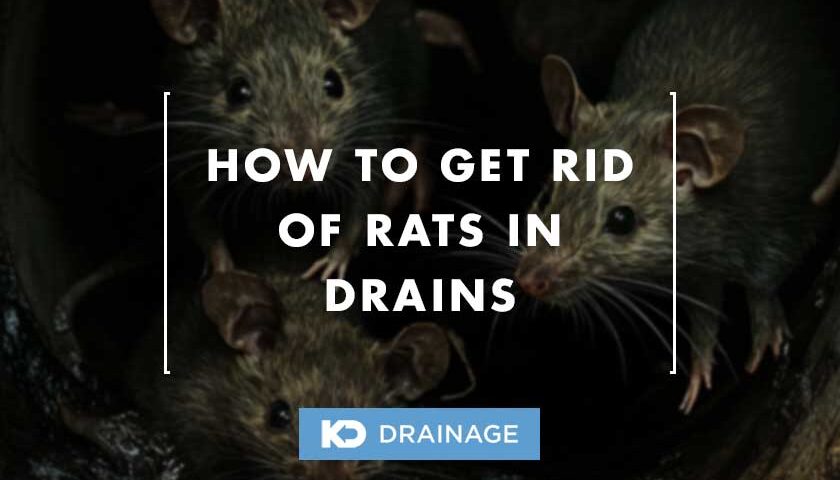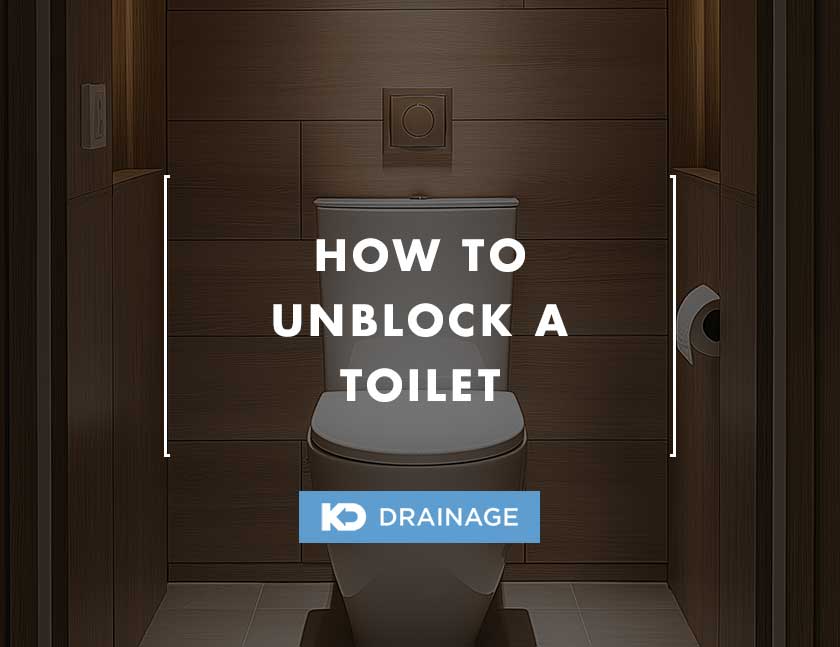
How to Clean a Grease Trap
1 September 2024
How to Clear a Blocked Drain
1 November 2024How to Get Rid of Rats in Drains
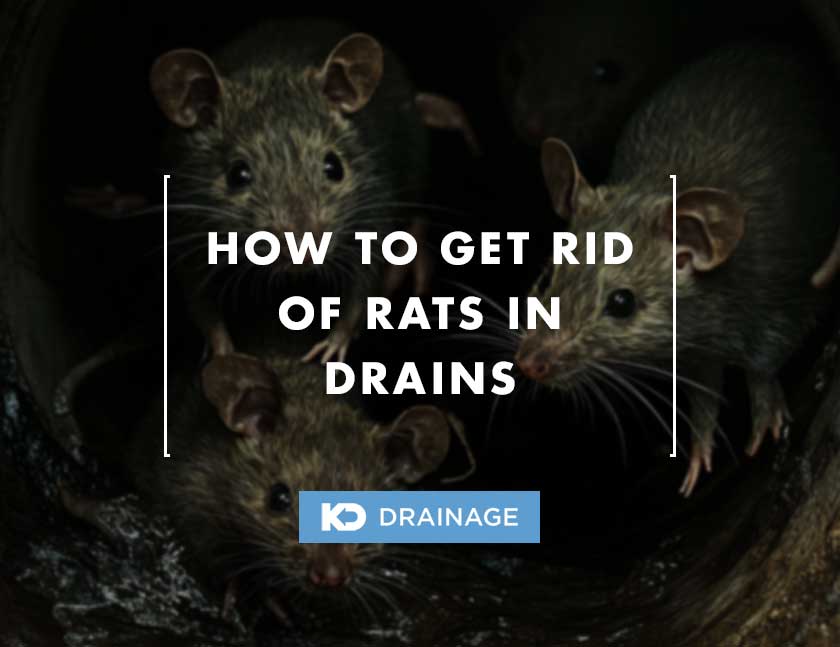
Rats are a common problem in many areas, both urban and rural.
These rodents are notorious for their ability to adapt and thrive in various environments, including homes, businesses, and public spaces.
But what about rats in drains?
One of the most challenging places to deal with a rat infestation is in drains.
Drains provide a perfect habitat for rats due to their dark, damp, and often food-rich conditions.
Rats in drains can be especially troublesome as they are not just a nuisance but a serious health and safety concern.
This article aims to provide help on dealing with rats in drains.
We will explain why rats find drains so attractive and the problems they cause when they infest these areas.
Understanding the reasons behind their presence is the first step in effectively addressing the issue.
By following the advice in this article, you can tackle the problem of rats in drains efficiently and prevent future infestations, ensuring a safer and healthier living or working space.
Table of Contents
Why do Rats Live in Drains?
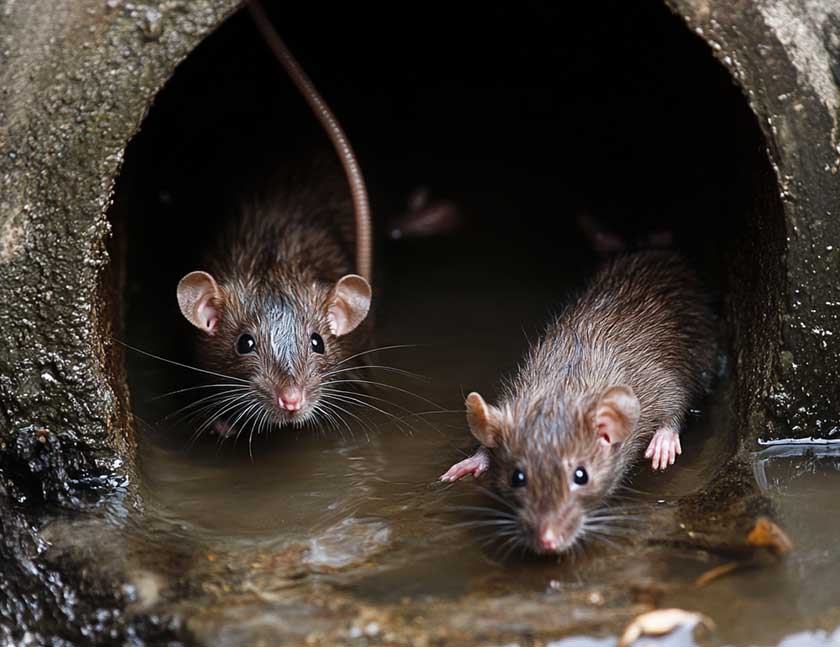
Rats find drains to be an ideal habitat due to several key factors that meet their basic survival needs.
Understanding why rats are drawn to drains can help in developing effective strategies to control and prevent infestations.
Food Sources
Drains often contain a variety of food scraps and organic waste.
People unknowingly wash food particles down their sinks, providing a consistent food supply for rats.
This abundance of food is one of the primary reasons rats are attracted to drains.
They can find everything from grease and oils to small food particles, which sustains their population.
Water Availability
Rats require a constant supply of water to survive, and drains provide easy access to it.
The moist environment of drains ensures that rats can stay hydrated without having to venture far.
This makes drains particularly appealing, especially in dry conditions where water sources might be scarce above ground.
Shelter
Drains offer rats a safe haven from predators and harsh weather conditions.
The dark, enclosed spaces of drain systems provide excellent protection and concealment.
These areas are usually undisturbed by humans, allowing rats to nest and reproduce without significant threats.
The complex network of pipes also makes it difficult for predators to follow or catch them.
Temperature Regulation
Drains typically maintain a stable temperature, which is beneficial for rats.
During extreme weather conditions, whether hot or cold, drains offer a relatively comfortable environment.
This stable temperature helps rats to thrive and reproduce year-round, contributing to their population growth.
Easy Navigation
Rats are adept at navigating through the narrow and complex networks of drains.
Their flexible bodies and strong swimming abilities allow them to move through pipes and find food, water, and shelter efficiently.
This ease of movement makes drains a preferred living space for these rodents.
Why are Rats in Drains Bad?
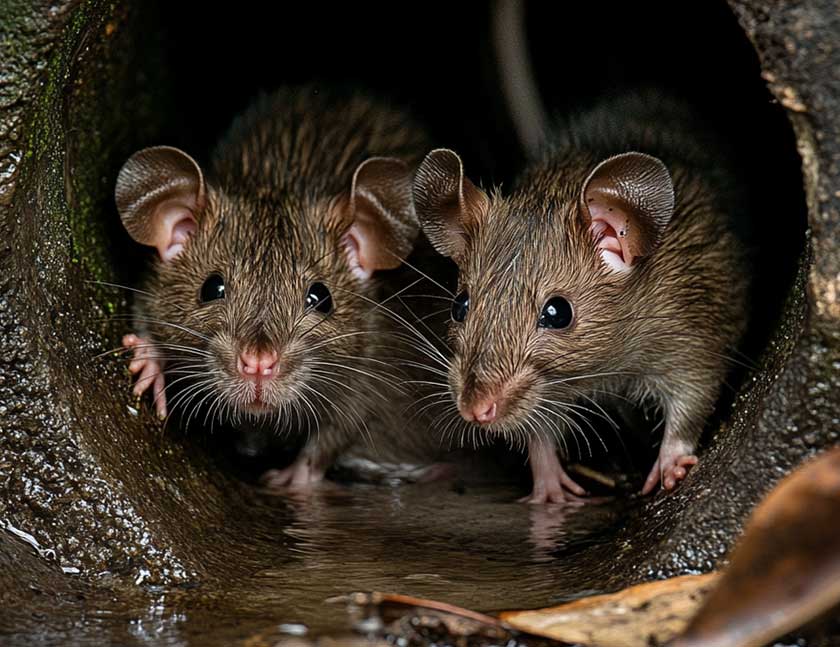
Rats living in drains pose significant problems for both health and property.
Understanding these issues is crucial to appreciating the importance of addressing rat infestations promptly.
Health Risks
Rats are notorious carriers of various diseases that can easily spread to humans and pets.
They carry pathogens such as leptospirosis, salmonella, and hantavirus.
When rats travel through drains, they can contaminate surfaces and water supplies with their urine, faeces, and saliva.
This contamination can lead to serious illnesses, especially if it reaches food preparation areas or drinking water sources.
Structural Damage
Rats are known for their constant gnawing, a behaviour necessary to keep their teeth trimmed.
In drains, they can chew through pipes, leading to leaks and potential water damage.
Over time, this can result in significant structural damage that requires expensive repairs.
They can also damage electrical wiring within walls or near plumbing, posing fire hazards and causing power outages.
The amount of waste from rats can also cause blocked drains.
Infestations
Drains provide a hidden, secure environment for rats to breed.
A small rat population can quickly grow into a large infestation if left unchecked.
This rapid reproduction exacerbates all other problems, making it more challenging and costly to control the infestation.
Smells
Rats in drains can create unpleasant smells that permeate through homes and businesses.
The smell of rat urine, faeces, and decaying food can be strong and persistent, affecting the overall living environment and comfort.
Anxiety and Stress
The presence of rats can cause significant stress and anxiety for homeowners and business operators.
Knowing that rats are living within the property can be unsettling, especially when considering the potential health risks and structural damage.
Legal Concerns
For businesses, particularly those in the food industry, a rat infestation can lead to legal issues and severe reputation damage.
Health inspections can result in fines or even closures if rats are found, and customers are likely to avoid establishments known to have a rodent problem.
How to Get Rid of Rats in Drains

Eliminating rats in drains requires a combination of inspection, cleaning, trapping, and sometimes professional intervention.
Here’s a step-by-step guide to effectively get rid of these pests.
Inspect and Identify
Begin by inspecting your property to identify where rats are entering and living.
Look for signs such as droppings, gnaw marks, and tracks around drain openings.
Pay attention to any unusual noises or smells that might indicate an infestation.
Seal Entry Points
Rats can squeeze through very small openings. Seal any cracks or holes where rats can enter.
Use durable materials like metal mesh, or caulk to block these entry points.
Ensure all drain covers are intact and securely fastened to prevent rats from entering through broken or loose covers.
Clean Drains
Rats are attracted to food scraps and debris in drains.
Regularly clean your drains to remove these attractants.
Use a mixture of hot water, bleach, and detergent to thoroughly clean the pipes.
This not only removes food sources but also eliminates the odours that attract rats.
Use Traps
Set traps near drain entry points and areas where you’ve noticed rat activity.
Snap traps and electronic traps are effective options.
Place traps along rat runways (common paths they travel) and check them regularly.
Dispose of any caught rats safely to avoid spreading diseases.
Bait Stations
Consider using bait stations around your property.
These contain poison that rats consume and take back to their nests, effectively reducing the population.
Be cautious with poison, especially if you have pets or children.
Follow the instructions carefully and place bait stations where non-target animals cannot access them.
Professional Help
If the infestation persists or is severe, hiring a pest control professional is advisable.
Professionals have the expertise and tools to handle large infestations and can implement more advanced methods, such as a CCTV drain survey.
They can also provide ongoing monitoring and prevention tips to keep your property rat-free.
How to Prevent Rats Getting into Drains
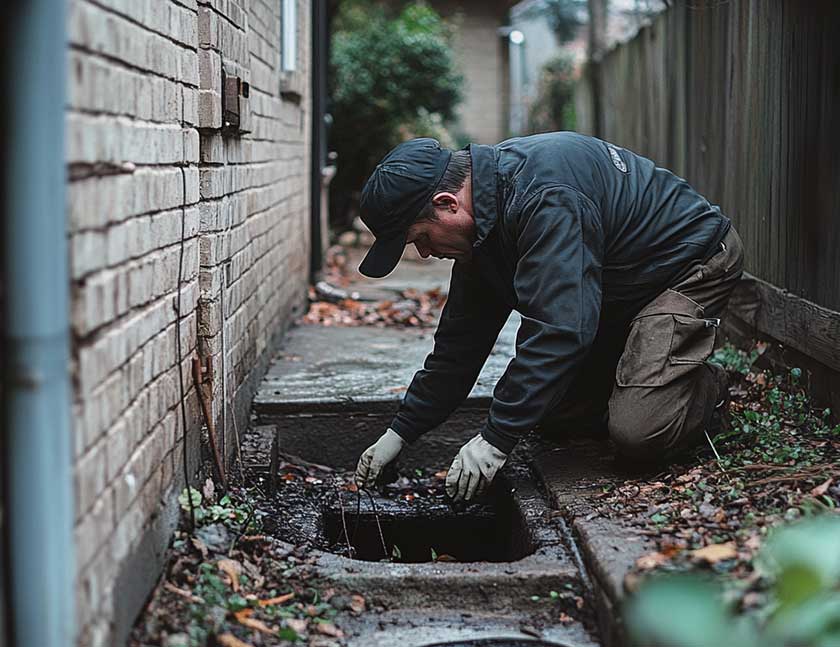
Preventing rats from getting into your drains is crucial to avoid the myriad problems they cause.
Here are some effective strategies to keep these pests at bay.
Proper Waste Removal
One of the most effective ways to prevent rats from entering drains is to manage waste properly.
Avoid washing food scraps, grease, and other organic matter down the sink.
Use a garbage disposal for appropriate food waste and dispose of larger scraps in a sealed trash bin.
Composting organic waste is another eco-friendly option that keeps food waste out of your drains.
Regular Maintenance
Regularly inspect and maintain your drain systems to ensure they are in good condition.
Check for and repair any cracks, leaks, or breaks in pipes that could allow rats to enter.
Keep drain covers intact and secure to prevent rats from squeezing through openings.
Replace damaged or missing covers promptly.
Secure Drains
Install metal grates or screens over large drain openings.
These barriers are effective at keeping rats out while allowing water to flow freely.
Ensure these grates are securely fitted and free of gaps.
Remove Attractants
Eliminate potential food and nesting sources around your property to make it less attractive to rats.
Keep outdoor areas clean and free of food debris.
Store food in sealed containers and secure trash bins with tight-fitting lids.
Remove clutter, such as piles of wood or debris, where rats could nest.
Educate Others
Inform family members, neighbours, and local businesses about the importance of preventing rats.
A community effort can significantly reduce the risk of rats entering drains and other areas.
Encourage others to follow proper waste disposal practices and maintain their properties to create a rat-free environment.
Professional Inspections
Consider scheduling regular inspections by a pest control professional.
They can identify potential entry points and provide additional recommendations for keeping rats out.
Professional inspections can help catch early signs of rat activity before it becomes a major issue.
Conclusion
Rats in drains are a serious problem that requires immediate attention.
By understanding why rats live in drains and why they are harmful, you can take steps to get rid of them.
Use a combination of inspection, cleaning, traps, and professional help to eliminate rats.
Prevent future infestations by properly disposing of waste, maintaining your drains, and securing entry points.
With these steps, you can keep your home and property free of rats and the problems they cause.

